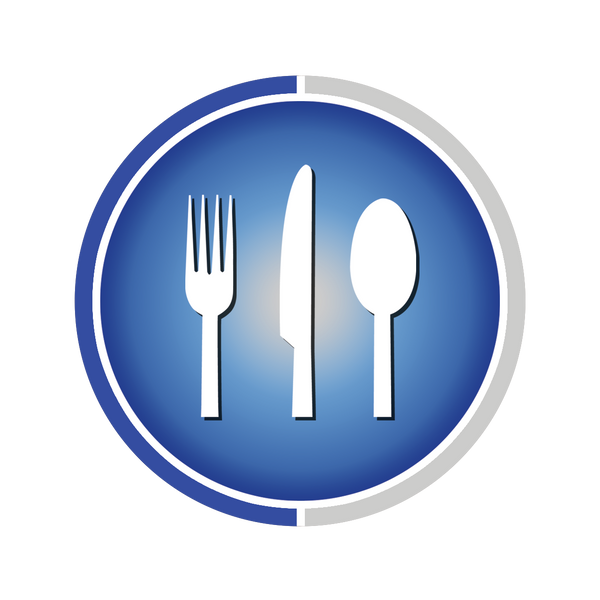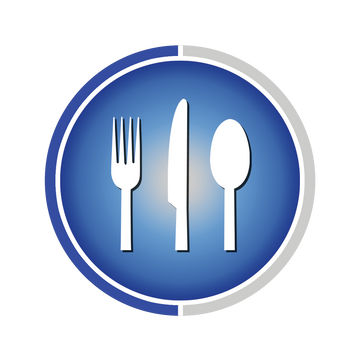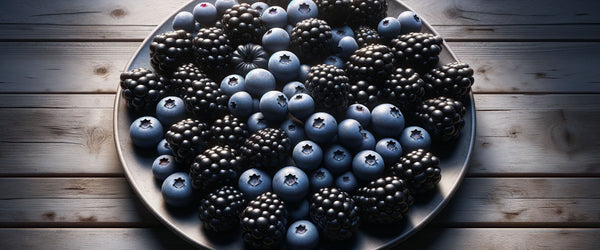Understanding Artificial Purple Dyes and Their Side Effects

Chemical Composition and Side Effects
Artificial purple food dye is typically produced by mixing Red No. 3 (Erythrosine) and Blue No. 1 (Brilliant Blue FCF).
- Erythrosine (Red No. 3): The manufacturing process begins with the synthesis of fluorescein. This involves reacting resorcinol with phthalic anhydride in the presence of zinc chloride. The resultant fluorescein is then iodinated to produce erythrosine. Visit our page discussing red dye side effects here.
- Brilliant Blue FCF (Blue No. 1): The manufacturing of Brilliant Blue involves a complex process that begins with the reaction of alpha-naphthylamine with sulfuric acid to produce diazonium salt. This compound is then coupled with N,N-Dimethylaniline to yield the Brilliant Blue FCF. Visit our page discussing blue dye side effects.
Potential Risks to Children
One of the major health concerns associated with artificial food coloring is their potential impact on children's behavior.
- Hyperactivity in Children: A landmark study published in The Lancet in 2007 suggested a link between consumption of artificial colors and increased hyperactivity in children. It indicated that artificial food colors, including Red 3 and Blue 1, may exacerbate hyperactive behavior in children who are already prone to it and could induce a reaction in those who are not typically hyperactive.
- Potential Allergic Reactions: Though rare, allergic reactions to artificial food colors have been reported. Symptoms can include hives, itching, and difficulty breathing.
- Cognitive Effects: Some researchers have also suggested a possible link between exposure to artificial food coloring and cognitive issues in children. While the evidence is still preliminary, these findings underscore the need for further research into the potential effects of these substances on brain function.
Getting to Know Purple Dye
Purple dye used in food is not typically a singular substance but a combination of two or more dyes. The most common formulation includes Red No. 3 (Erythrosine) and Blue No. 1 (Brilliant Blue FCF). Erythrosine is a cherry-pink synthetic, coal tar-derived compound, while Brilliant Blue FCF is a synthetic blue dye made from aromatic hydrocarbons from petroleum. Combined, they produce the purple hue found in many foods and beverages.
Purple (Mauve) - The First Ever Artificial Food Dye
Artificial dyes have been part of our lives for over a century. The first synthetic dye was created in 1856 by Sir William Henry Perkin, a British chemist. It was an accidental discovery; Perkin was attempting to synthesize quinine, a treatment for malaria, but instead created a purple dye which he named "mauveine", later shortened to "mauve". Purple was the first artificial food dye, cool!
The Birth of Modern Era Artificial Purple Food Dye
Artificial purple food dye is typically a mix of Red 3 or Erythrosine and Blue 1 or Brilliant Blue FCF. The advent of these dyes can be traced back to the late 19th century when they were created in laboratories.
Erythrosine was first synthesized in 1879 by Swiss chemist Adolf von Baeyer. Brilliant Blue FCF, on the other hand, had its origins slightly later in 1929. These colors were designed to provide the food industry with stable and vibrant coloring options, without the inherent instability of natural colors.
Chemicals Involved in the Manufacturing Purple Dye
- For Erythrosine: Key chemicals involved include resorcinol, phthalic anhydride, zinc chloride, and iodine.
- For Brilliant Blue FCF: The process involves the use of alpha-naphthylamine, sulfuric acid, and N,N-Dimethylaniline.
How Other Countries Regulate Artificial Purple Dye
In the United States, the FDA maintains that artificial food colors are safe for consumption. However, they also note that certain individuals may be sensitive to these colors and experience side effects.
The regulations governing the use of artificial food dyes differ significantly around the world. The approach to artificial purple dye, typically a blend of Red 3 (Erythrosine) and Blue 1 (Brilliant Blue FCF), varies across countries. While these dyes are permitted in the United States, other countries adopt stricter regulations or have outright bans on them.
European Union - The European Union (EU) has been leading in stricter regulations on artificial food dyes. This stems from their commitment to the "precautionary principle", which dictates that if a substance has the potential for harmful effects, protective action may be taken despite scientific uncertainty.
In the EU, Brilliant Blue FCF (Blue 1) is allowed for use in food, but its usage must comply with specific concentration limits. However, Erythrosine (Red 3) is significantly restricted. It is permitted only in a few foodstuffs, such as cocktail and candied cherries, Bigarreaux cherries, and breakfast cereals containing processed cereal-based flakes and extruded or expanded cereals.
United Kingdom - Following the "Southampton Study" in 2007, the UK's Food Standards Agency (FSA) advised food manufacturers to voluntarily phase out the use of several food dyes by the end of 2009. The study linked artificial food dyes, including Blue 1, to hyperactivity in children. Though not a legal requirement, this move has led many manufacturers to switch to natural alternatives or remove colorings altogether. Foods that still contain these artificial dyes must carry a warning label indicating that they "may have effects on activity and attention in children".
Australia and New Zealand - Utilize a shared food standards system under Food Standards Australia New Zealand (FSANZ). In these countries, both Erythrosine (Red 3) and Brilliant Blue FCF (Blue 1) are permitted food colorings. However, their use is governed by strict maximum levels in specific food categories to ensure safety.
Japan - Japan is known for its strict food safety regulations. While Brilliant Blue FCF (Blue 1) is permitted as a food additive, Erythrosine (Red 3) is not approved for general use. It can only be used in certain prescribed foods and within a set maximum amount.
Common Foods with Purple Dye
With the food industry's fondness for colorful presentation, several everyday foods contain purple dye. However, the top three most common would be sugary cereals, candy, and brightly colored beverages.
- Sugary Cereals: Many breakfast cereals targeted at children contain a rainbow of colors, including purple. These cereals often use food dyes to make them more visually appealing to young consumers.
- Candy: Various candies, especially gummy types and hard candies, often use purple dye. It's commonly found in grape-flavored sweets and any candies that have a 'berry' assortment.
- Beverages: Soft drinks, energy drinks, and fruit-flavored beverages often use food coloring to enhance their appearance. Purple dye is commonly used in grape and other berry-flavored drinks.
Top 10 Foods with Artificial Purple Dye
Artificial purple dye is usually a mixture of two artificial colorings: Red 3 (Erythrosine) and Blue 1 (Brilliant Blue FCF). Here are the top ten foods that often contain artificial purple dye, some of which might surprise you.
- Colored Breakfast Cereals: Many cereals targeted towards children are brightly colored and use a mix of dyes, including purple.
- Packaged Fruit Snacks: Despite the word "fruit" in their name, these snacks often use artificial colors instead of natural fruit pigments.
- Sodas and Sports Drinks: Many drinks use artificial colorants to achieve their vibrant colors, including purple.
- Candies and Chewing Gums: Almost all candies and chewing gums use artificial colors, and purple is among the favorites.
- Frosting and Decorative Sugars for Baking: These colorful baking aids often contain artificial dyes, including purple.
- Ice Cream and Frozen Desserts: Many of these sweet treats contain artificial colors to make them more visually appealing.
- Pre-packaged Meals and Snacks: Some microwaveable meals and snacks use artificial colors to make the food look more appealing after cooking.
- Cupcakes and Pastries: Many commercially prepared baked goods use artificial coloring in both the product and the icing.
- Popsicles and Ice Pops: These colorful frozen treats often use artificial colors, including purple, to attract children.
- Salad Dressings: Some types of salad dressing use artificial colors to enhance their appearance.
Natural Alternatives to Artificial Purple Dye
There are many natural food ingredients that you can use to color your food red without synthetic chemicals like Allura Red AC or Blue 1 that are often combined to make purple! Red cabbage, blueberries, blackberries, and purple sweet potatoes are just a few examples of natural sources that can create the color purple in our food for wool.




